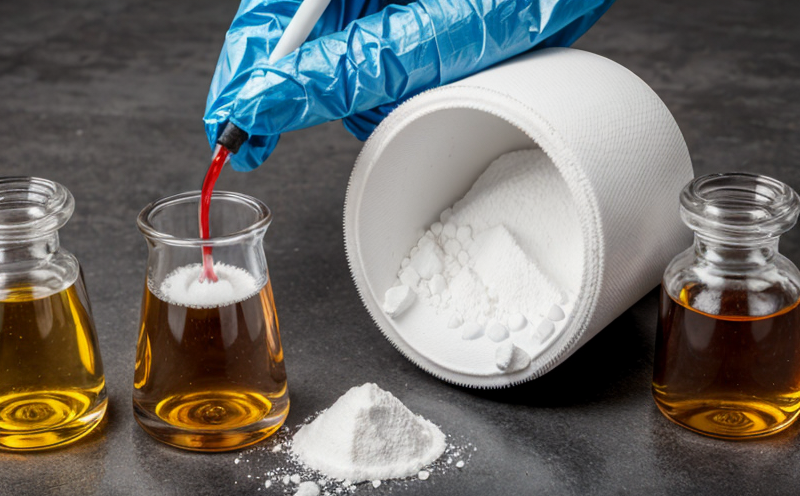CENELEC EN 62321 Material Substance Restriction Compliance Testing
The CENELEC EN 62321 standard is a critical component in the European Union's regulatory framework aimed at ensuring that electrical and electronic products comply with material restrictions on hazardous substances. This test ensures that manufacturers adhere to Directive 2011/65/EU (RoHS) requirements, which prohibit certain hazardous substances from being used in the manufacture of electrical and electronic equipment.
The standard covers a wide range of materials including but not limited to lead, mercury, cadmium, hexavalent chromium, polybrominated biphenyls (PBB), and polybrominated diphenyl ethers (PBDE). Compliance with this test is essential for businesses operating within the European market as failure to meet these requirements can result in fines, product recalls, and damage to brand reputation.
The testing process involves thorough sampling of materials used in electrical and electronic products. Specimens are analyzed using a combination of spectroscopic methods such as Inductively Coupled Plasma Mass Spectrometry (ICP-MS) and Fourier Transform Infrared Spectroscopy (FTIR). The results provide detailed information about the concentrations of restricted substances present, ensuring that the levels do not exceed those specified in the directive.
For R&D engineers, this test is invaluable as it provides insights into potential compliance issues early in the product development cycle. Quality managers and procurement officers can use these findings to make informed decisions regarding supply chain management and ensure long-term compliance with regulatory requirements.
In terms of acceptance criteria, the standard specifies maximum allowable concentrations for each restricted substance. For example, lead (Pb) is allowed at a concentration not exceeding 1000 ppm, while hexavalent chromium (Cr(VI)) must be below 300 ppm when measured in surface treatments and certain plastics.
Understanding the intricacies of this test can help businesses navigate the complexities of European regulations. By staying informed about changes to the directive and testing methodologies, companies can maintain a competitive edge in the market. The continuous improvement of analytical techniques ensures that even trace amounts of restricted substances are detectable, enhancing overall product safety.
The importance of adhering to CENELEC EN 62321 cannot be overstated. Non-compliance may lead to severe consequences including legal action from regulatory bodies and negative impacts on consumer trust. Regular testing not only mitigates these risks but also demonstrates a commitment to responsible manufacturing practices.
- Industry Applications: Electronics manufacturing, electrical equipment production, compliance with European Union directives
- Why Choose This Test: Ensures product safety, minimizes legal risks, enhances brand reputation
Why It Matters
The significance of CENELEC EN 62321 compliance testing extends beyond mere regulatory adherence—it plays a pivotal role in safeguarding public health and the environment. By restricting hazardous substances, this standard contributes to reducing exposure to toxic materials that could otherwise pose risks during production, use, and disposal phases.
Manufacturers must ensure their products meet stringent environmental standards set forth by various directives like RoHS. This not only enhances product safety but also promotes sustainable practices within the industry. Consumers benefit from knowing they are purchasing items made under rigorous quality control measures which reduce potential health hazards associated with certain chemicals.
Furthermore, compliance fosters international collaboration between countries sharing similar environmental goals. It encourages innovation in developing safer alternatives to restricted substances while maintaining functionality and performance levels expected by users worldwide.
For businesses operating globally, meeting this standard opens doors to markets where such regulations are enforced. It can also enhance customer confidence through transparent communication regarding product safety features. Overall, prioritizing CENELEC EN 62321 compliance helps establish trust both internally among employees and externally with stakeholders including suppliers and end customers.
Industry Applications
- Electronics manufacturing: Ensuring products comply with European Union directives for safe use.
- Electrical equipment production: Meeting stringent environmental standards to protect public health.
- Sustainable practices promotion: Encouraging innovation in developing safer alternatives to restricted substances.
- Globally operating businesses: Opening doors to markets where such regulations are enforced.
The implementation of CENELEC EN 62321 compliance testing supports a wide array of industries and sectors involved in the design, manufacturing, and distribution of electrical and electronic products. By adhering to these standards, companies contribute significantly towards creating safer environments for consumers while upholding ethical business practices.
Why Choose This Test
- Ensures product safety by restricting hazardous substances.
- Minimizes legal risks associated with non-compliance to European Union directives.
- Enhances brand reputation through transparent communication regarding product safety features.
- Fosters international collaboration between countries sharing similar environmental goals.
Selecting CENELEC EN 62321 material substance restriction compliance testing as part of your quality assurance program offers numerous benefits. It not only helps in avoiding penalties but also enhances customer trust and satisfaction. By choosing this test, businesses demonstrate their commitment to sustainability and responsible manufacturing practices.





